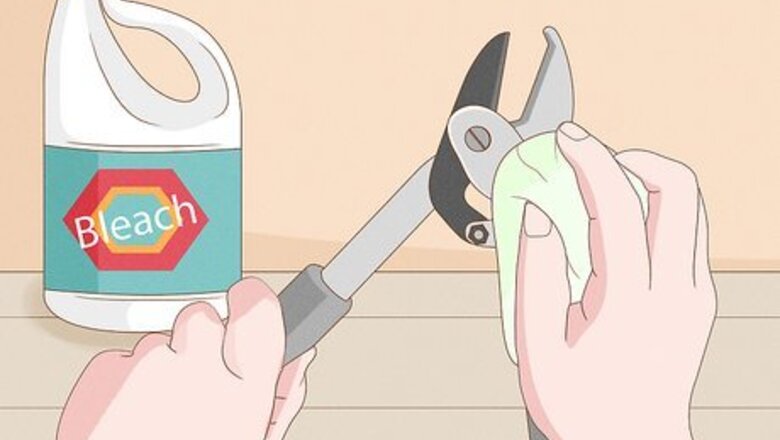
views
Pruning for General Health
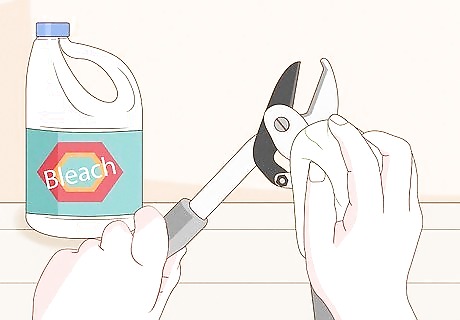
Disinfect your clippers before trimming. To make sure that your mulberry tree stays healthy and disease free, be sure to clean your clippers before using them. You can do this with a household disinfectant product, such as Lysol or bleach. You can also rub isopropyl alcohol on the clippers to disinfect them. Cleaning your clippers is especially important if you have more than one mulberry tree. Unclean clippers can transfer diseases between the trees and unintentionally infect trees that were previously disease free.

Pick the right tool for the job. When cutting a branches that are close to 2 inches (5.1 cm) in diameter you should use loppers. These are shears that can handle large diameter branches because they have longer handles that can give you leverage. If you are cutting a smaller branch, such as one under 1 inch (2.5 cm) in diameter, you can use simple pruning shears.
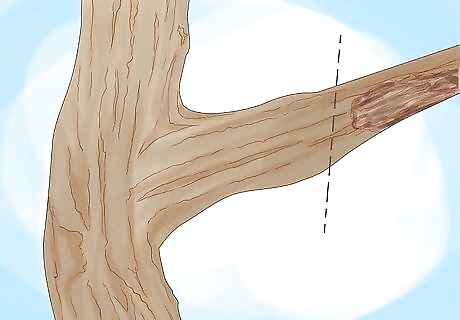
Make cuts close to the trunk. if you are removing whole branches you should make cuts as close to the trunk as possible. There should still be a small swollen area left where the branch emerged from the trunk, but the rest of the branch should be removed. When cutting off a small dead area, cut the piece back to the closest part of the branch that is still alive. This is usually where there is a growth split in the branch or all the way back to the trunk.
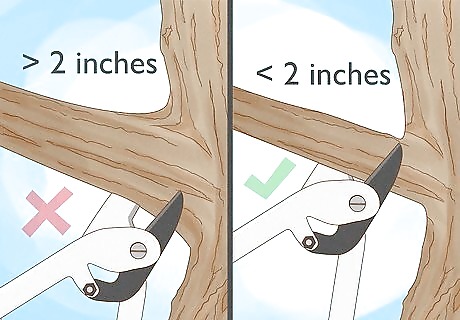
Avoid pruning branches that are over 2 inches (5.1 cm) in diameter. Mulberry trees have a hard time healing cuts that are large. This exposed area will leave the tree vulnerable to diseases and fungi and has a tendency to bleed sap. Be sure to keep the sap of the tree off of your skin, as it can be irritating to some people.
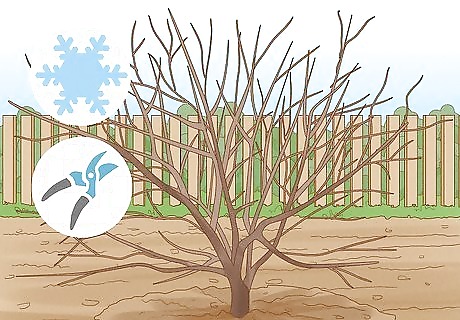
Prune the tree in winter. Trimming while the tree is dormant for the winter allows the tree to heal the wound easily, and minimizes the chance of diseases or fungi entering the tree through the cut. This is because there are fewer diseases and fungi active during the winter. Wait to prune your mulberry until about a month after it has lost all of its leaves. This will ensure that the tree is actually dormant. Mulberry trees have a tendency to bleed sap from areas where they are trimmed. This is less likely for cuts made during winter but may still occur.
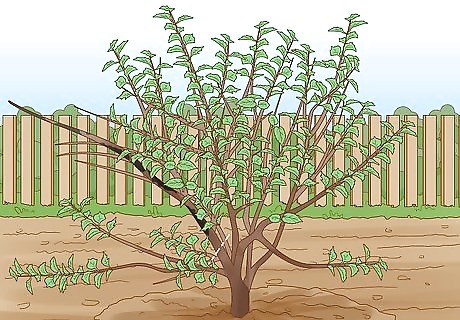
Cut off dead and damaged branches. To keep your mulberry tree healthy, it's a good idea to remove branches that could encourage disease. Any branches that have not produced leaves should be considered dead and should be removed. While it's a good general idea to wait for winter to trim your mulberry, dead branches should be removed as soon as they are identified. Just be aware that the cut may bleed sap for weeks or even months, which is common with mulberry trees.
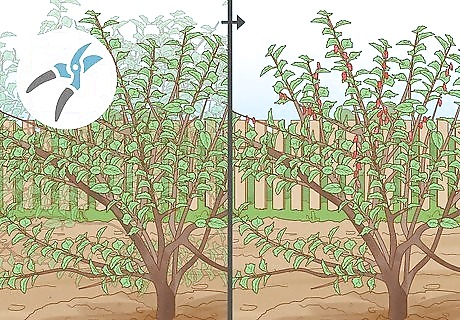
Do minimal trimming to ensure plentiful fruiting. One of the best reasons for having a mulberry tree is getting to enjoy the fruits that it produces in the summer. The fruit of a mulberry grows on branches that grew the previous year, so you shouldn't trim the tree much if you want a lot of fruit. To ensure that you can harvest the fruit easily, you should control how tall the tree gets. This will allow you easy access to the fruit that develops in the tree's canopy. It will also minimize the chance of birds getting to the fruit before you are able to harvest them. If you do trim your tree, start with the bottom third of the tree and work your way up.
Pruning to Control Size and Shape
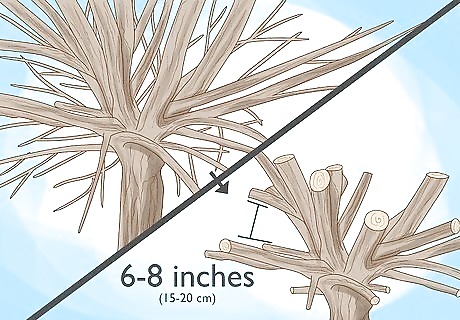
Selectively thin the plant. To make sure that your mulberry tree is full and evenly shaped, eliminate overcrowding and ill-placed branches. Trim off branches that cross each other or interfere with each other's growth. Try to make it so the branches going up and down the tree are 6–8 inches (15–20 cm) apart from each other. By doing this you can train the tree to grow in a way that is pleasing to the eye. Look for shoots that are spaced close together on branches. Eliminate one so that the other can thrive. Cut off any branches that make the tree look unattractive or unkempt. For example, trim off branches that grow out of the trunk below the main mass of branches.
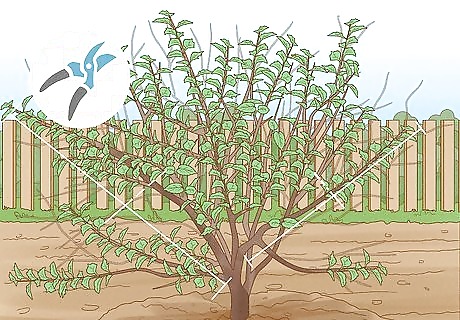
Do slight trimming in summer. Although most trimming should be done in winter, you can do some selective trimming in the summer if your tree is growing too much for your liking. For example, you can trim off the top of the tree in summer to control its height. You can also trim 1 or 2 branches back halfway if you are trying to create a thicker branch. Do summer trimming in the first half of the summer. If you do it later in the season you may trim off fruit buds that are emerging. Summer trimming is more likely to encourage sap seeping from the cuts. Take this into consideration when deciding whether a tree needs a summer trim.
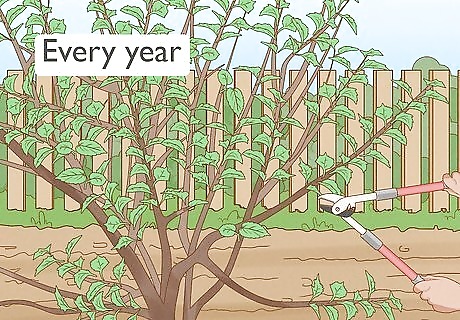
Trim the tree on a regular basis. How often you trim your mulberry tree depends on what you want it to provide for you. If you want to control your tree's size and have more access to its fruit, then you should trim it every year. If you want a fuller tree that provides a shady spot underneath, then trimming it every 2 or 3 years is sufficient. Whether you want a full and large shade tree or a productive fruit tree, you should trim off dead or damaged branches as soon as possible. Don't trim off the main branches on your tree unless they're diseased or dying.


















Comments
0 comment